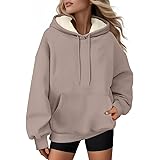The concept of sustainable fashion often sparks diverse interpretations. As the video above eloquently illustrates, it embodies many facets. From conscious purchasing to garment longevity, defining sustainable fashion is a multifaceted endeavor. It extends beyond just eco-friendly materials. It encompasses an entire ecosystem of ethical practices. Understanding this broad scope is crucial.
At its core, sustainable fashion represents a paradigm shift. It moves away from the linear “take-make-dispose” model. Instead, it embraces circularity and responsibility. This industry transformation impacts every stage of a garment’s life. It begins with raw material sourcing. It continues through production, distribution, use, and eventual end-of-life.
The Pillars of Sustainable Fashion: Beyond a Single Definition
Sustainable fashion is not a single, monolithic concept. It is a mosaic of interconnected principles. These principles guide our choices. They inform industry innovation. Let’s delve into these key components. Each plays a vital role in shaping a responsible apparel future.
Thoughtfulness in Consumption: A Mindful Approach
Being thoughtful is fundamental to sustainable fashion. It means making deliberate choices. Consumers must consider the provenance of their clothing. They should evaluate its environmental footprint. Think of a careful gardener. They select seeds for their long-term impact. Similarly, we choose garments for their lasting value. This reduces impulsive, wasteful purchases.
Consider the garment’s full lifecycle. What resources went into its creation? Who made it, and under what conditions? How long will it serve its purpose? This mindful approach shifts us. It moves us from passive consumption to active participation. This deeper engagement fosters genuine sustainability.
Personal Style and Longevity: Building a Considered Wardrobe
Sustainable fashion champions personal style. It encourages individuality. This goes hand-in-hand with longevity. A timeless wardrobe defies fleeting trends. It emphasizes quality over quantity. Imagine a well-curated art collection. Each piece holds enduring appeal. A similar philosophy applies to clothing. Invest in pieces that resonate with your identity. They should withstand the test of time and wear. This approach greatly reduces textile waste. It makes fashion more personal and less disposable.
The Garment’s Story: Tracing Its Ethical Journey
Every garment carries a story. This narrative reveals its origin. It highlights its production journey. Sustainable fashion demands transparency. It asks about the hands that crafted it. Were they fairly compensated? Were their working conditions safe? Ethical sourcing is paramount here. Traceability systems offer insights. They connect consumers to supply chains. This ensures social responsibility. It’s like understanding a treasured antique’s history. Knowing its journey adds profound value.
For example, consider cotton production. Conventional methods are often water-intensive. They rely heavily on pesticides. Organic cotton, by contrast, uses less water. It avoids harmful chemicals. This reduces environmental impact significantly. Consumers increasingly demand this visibility. They want to know their clothes align with their values.
Circularity and Community: Closing the Loop for Good
The concept of circularity is central to sustainable fashion. It aims to eliminate waste. It keeps resources in use longer. This model contrasts sharply with linear systems. Community involvement strengthens this effort. It fosters collective responsibility. Think of a closed-loop water system. Water is recycled and reused. Materials are continuously repurposed. This minimizes ecological strain. It supports local economies too.
Zero Waste Principles: Designing for Resource Efficiency
Zero waste is a powerful aspiration. It targets waste at every stage. This begins in the design phase. Pattern cutting can minimize fabric scraps. Brands might repurpose off-cuts. They convert them into new accessories. Post-consumer waste is another focus. Garments are designed for disassembly. This allows material recovery. Imagine a modular building. Components can be reused or recycled. This approach reduces landfill burden. Textile waste is a significant global issue. Reports indicate millions of tons end up in landfills yearly. Embracing zero-waste principles mitigates this impact.
Being Selective: Quality Over Quantity
Selectivity is an act of conscious consumption. It prioritizes durability and craftsmanship. This means investing in well-made items. These pieces endure wear and wash cycles. They retain their aesthetic appeal. It’s akin to choosing a classic car. You expect it to last for decades. This stands in contrast to fast fashion’s disposability. It means curating a wardrobe. Each item serves a purpose. It also brings joy. This approach reduces overall consumption. It lessens resource depletion. It empowers consumers to be discerning curators.
Closing the Loop for Fashion for Good: The Ultimate Goal
To “close the loop” is the ultimate aim. It means creating a truly circular system. Products and materials circulate indefinitely. Waste becomes a resource. This system benefits both people and planet. It envisions a future where fashion is regenerative. It supports communities. It restores ecosystems. This involves innovative recycling technologies. It requires robust infrastructure for material collection. It’s a systemic overhaul. It ensures fashion contributes positively to the world. This is sustainable fashion‘s grand vision.
Innovative Practices: Rethinking How We Interact with Clothing
Beyond purchasing, our interaction with clothing evolves. New practices emerge. These offer exciting avenues for sustainability. They extend garment life. They foster creative expression. These methods challenge traditional ownership models. They redefine our relationship with apparel.
Thoughtful Design: Engineering for Longevity and Impact
Thoughtful design is the blueprint for sustainability. It considers a garment’s entire journey. Designers select materials mindfully. They prioritize low-impact fibers. This includes organic cotton or recycled synthetics. Design choices influence durability. They impact repairability. Furthermore, timeless aesthetics reduce obsolescence. Good design is like architectural integrity. It ensures strength and beauty for years. This holistic approach prevents premature disposal. It makes products inherently more sustainable.
Getting Creative: Personalizing and Repurposing
Creativity is a powerful tool in sustainable fashion. It involves personalizing existing items. This gives them new life. Dyeing, embroidering, and patching are common methods. This creative engagement fosters appreciation. It builds a deeper connection to clothes. It’s similar to a painter transforming a blank canvas. Each piece becomes unique. This reduces the need for new purchases. It celebrates individuality. It transforms clothing into wearable art. This also minimizes the industry’s environmental burden.
Repairing and Upcycling: Extending Garment Life
Repairing and upcycling are practical sustainability actions. Mending torn seams extends wear. Replacing buttons breathes new life into items. Upcycling transforms old garments into new ones. An old pair of jeans might become a stylish bag. A worn shirt could become a child’s dress. This skillset is invaluable. It reduces landfill waste. It saves resources. It’s like a mechanic keeping an old engine running. It prolongs utility and value. These practices are cornerstones of a truly circular apparel culture.
Renting More: Access Over Ownership
Renting offers an alternative to ownership. It’s particularly useful for special occasions. Bridal wear or formal attire can be rented. This reduces individual consumption. It promotes resource sharing. Imagine a shared library of exquisite garments. You access what you need. Then you return it for others. This model democratizes luxury. It lowers the environmental footprint. It moves us toward an “access economy.” This is a significant shift in how we engage with fashion. It supports a more sustainable future.
Ultimately, sustainable fashion is not merely about what you acquire. It’s profoundly about what you actively do with it. It emphasizes thoughtful interaction. It promotes conscious choices throughout a garment’s existence. This fundamental shift defines true sustainable fashion. It fosters a responsible and vibrant apparel industry for all.











